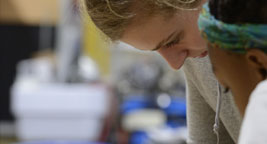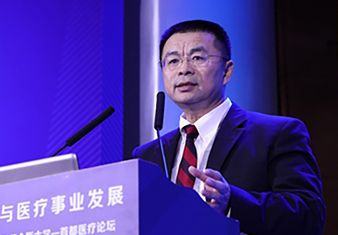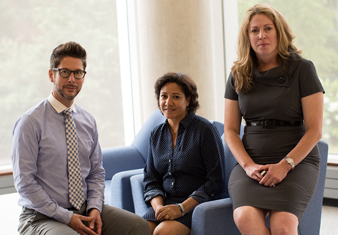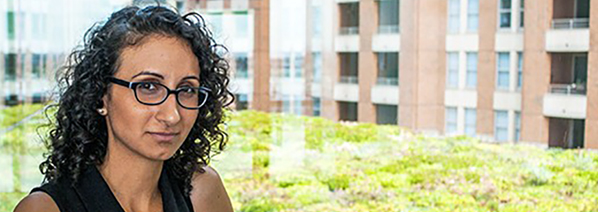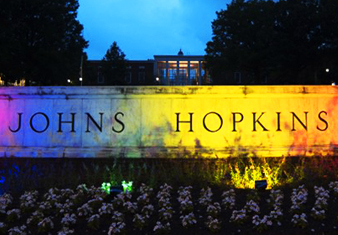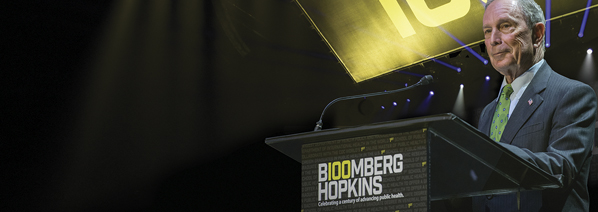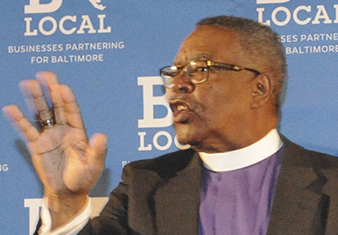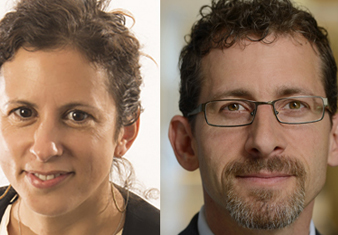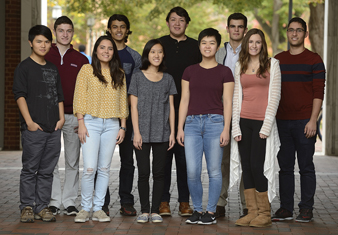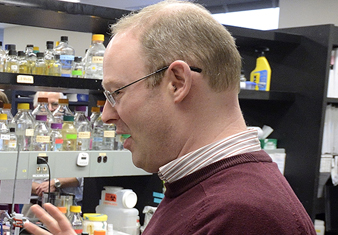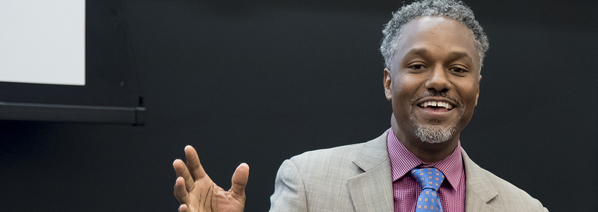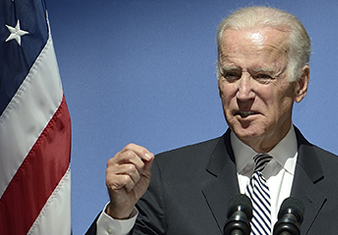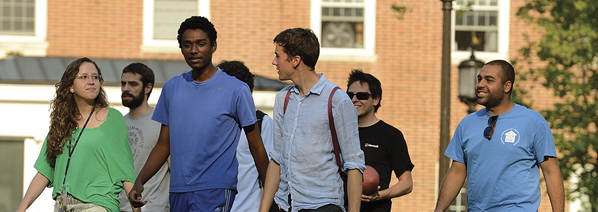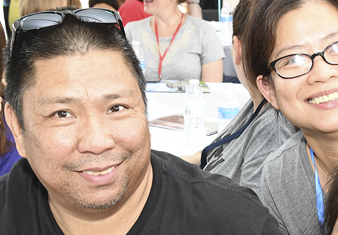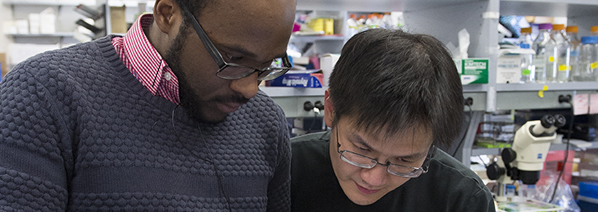10x 2020
A vision for Johns Hopkins by the year 2020
In May 2013, Johns Hopkins University President Ronald J. Daniels articulated priorities for the university through the remainder of the decade, collectively called the Ten by Twenty. Here, we provide our second report on the progress the university has made toward those goals to date. And we invite you to join the conversation—you will find opportunities to engage throughout the report.
10x 2020 Progress Report Spring 2017
A vision for Johns Hopkins by the year 2020
In May 2013, Johns Hopkins University President Ronald J. Daniels articulated priorities for the university through the remainder of the decade, collectively called the Ten by Twenty. Here, we provide our second report on the progress the university has made toward those goals to date. And we invite you to join the conversation—you will find opportunities to engage throughout the report.
Our
Priorities
The aspirations that inspire and guide us as we look to the second half of the decade.
- Four Priorities
- Ten Goals
- Thirty Snapshots
Ten by Twenty launched four years ago. How are we doing? There is still more work to do toward our ambitious goals, but we’ve made some good progress. Here we present 30 “Snapshots”—stories of our most recent accomplishments since our first progress report was released in March 2015.
One University
- 1Selectively invest in programs that support our core academic mission.
- 2Strengthen our capacity for faculty-led interdisciplinary collaboration and launch a set of innovative cross-cutting initiatives that will contribute substantially to the world of ideas and action.
- 3Enhance the impact of Johns Hopkins Medicine, the Bloomberg School of Public Health, and the School of Nursing as the world’s pre-eminent academic health sciences enterprise by deepening collaboration among these entities and with disciplines in other parts of the university and across the globe.
Individual Excellence
- 4Build Johns Hopkins’ undergraduate experience so it stands among the top 10 in the nation.
- 5Build on our legacy as America’s first research university by ensuring that at least two-thirds of our PhD programs stand among the top 20 in their fields.
- 6Attract the very best faculty and staff in the world through a welcoming and inclusive environment that values performance and celebrates professional achievement.
Institution Building
- 8Strengthen the institutional, budgetary, technological, and policy frameworks necessary to set priorities, allocate resources, and realize the highest standards of academic excellence.
- 9Reinforce our position as the leading university recipient of competitively funded federal research support, while increasing the amount of annual research investment from other sources with appropriate cost recovery.
- 10Develop the resource base necessary to support investments in key academic priorities.
Institution Building
Collaboration in China
Building on a 100-year-old collaboration. The Tsinghua–Johns Hopkins Public Health Management Program welcomed its first cohort of students in fall 2016, marking the beginning of the School of Public Health’s first collaborative degree program in China. The program is based in the Institute for Hospital Management at Tsinghua University, one of China’s leading research and educational institutions. Although the health
Institution Building
Combating Sexual Assault
Clearer policies and procedures to prevent misconduct. Like many colleges and universities across the country, Johns Hopkins has been evaluating and expanding its response and resources dedicated to sexual violence. The process has included drafting new policies and streamlining the reporting process while also finding out how community members—especially students—feel about the climate and culture on our campuses. Johns Hopkins unveiled a new
Institution Building
Going Green
Committing to a more environmentally conscious university. Since 2009, Johns Hopkins has reduced its greenhouse gas emissions by 35 percent, showing that the university continues to march closer toward the goal to cut the level of its 2008 emissions by 51 percent by 2025. This and other key metrics were included in a comprehensive report published in spring 2016 by the university’s
Individual Excellence
Fostering Inclusive Excellence
Cultivating a diverse community with improved supports and open dialogue. Johns Hopkins aims to cultivate a community where every member feels a full sense of belonging, regardless of race, gender, religion, sexual orientation, socioeconomic status, or political viewpoint. Building that sense of inclusion takes many forms, from improving the diversity of our community to facilitating candid conversations that confront barriers to opportunity. We are pursuing
Institution Building
100 Years and Counting
Michael Bloomberg’s unprecedented gift ensures many more public health milestones to come. In the words of businessman and philanthropist Michael R. Bloomberg, there is no institution better equipped to lead the charge for a healthier world than Johns Hopkins University. This leadership is evident in the work of the Bloomberg School of Public Health, which has been at the frontlines of many major global public health challenges, including
Commitment to Our Communities
An Engine of Growth
Building, buying, and hiring in Baltimore. Johns Hopkins is a critical economic engine for Baltimore, with hundreds of new employees hired each year, ongoing construction and renovation projects across the city, and annual purchases totaling millions of dollars in goods and services. Johns Hopkins has reaffirmed its long-standing commitment to Baltimore with several major initiatives designed to help the city realize
Individual Excellence
Enhancing Student Services
Simplifying the mechanics of student life. Our students are drawn to Johns Hopkins for its innovative education, but once they get here, they often find the mechanics of being a Hopkins student — like registering, enrolling, and managing financial aid — a bit byzantine. To modernize the services we provide our students, the university launched the Student Services Excellence Initiative in
One University
The Best and Brightest
A transformational gift anchoring interdisciplinary collaboration. In 2013, Johns Hopkins University created the Bloomberg Distinguished Professorships with $250 million of a generous $350 million gift from alumnus, philanthropist, and three-term New York City Mayor Michael R. Bloomberg. Bloomberg’s gift is part of a larger effort to facilitate interdisciplinary work across the university to galvanize people, resources, research, and educational opportunities around a
Individual Excellence
Finding Careers in Biomedicine
A pivot in how we train PhDs for their futures. Research universities are grappling with how to prepare the next generation of biomedical scientists for diverse careers both inside and outside academia. There are more students training for an academic career in biomedicine than there are faculty positions, and so our students’ biomedical training needs to align more closely with the job market. Johns Hopkins
One University
Crowdsourcing Big Ideas
Something innovative to share? There’s a platform for that. The mission of the university has always been to provide a platform for the contest of ideas. In March 2015, the university made that contest real by launching the Idea Lab. The Idea Lab is Johns Hopkins’ online platform for crowdsourcing innovative ideas from faculty, staff, and students for advancing the goals of the Ten
One University
Smart Health Coverage
Bringing the latest in health directly to consumers. The digital age has made it easy for consumers to research their own health but also easy to get lost in the flood of information—and misinformation—that the Internet provides. Johns Hopkins University and Johns Hopkins Medicine came together to cut through this noise by collaborating on a new consumer-driven magazine called Johns Hopkins Health Review.
Institution Building
Rising to the Challenge
Exceeding expectations with our latest fundraising campaign. In March 2016, Johns Hopkins announced that it was extending its successful Rising to the Challenge campaign by a year, with the goal of raising an additional $500 million to further increase student aid, bolster faculty and clinician support, and use research to address critical issues facing our communities and the world. Rising to the
Individual Excellence
Assessing Campus Well-Being
Working with students to meet their needs. Students know best how the university experience can be a challenge for one’s mental health. So when students urged President Daniels to take on issues of mental health on campus in fall 2015, he listened. The university convened a Task Force on Mental Health and Well-Being soon afterward to begin assessing the support programs and mental
Individual Excellence
Room to Take Risks
Three new awards provide the freedom to bring big ideas to life. The key to Johns Hopkins’ ability to attract and retain the best and brightest faculty is to make sure they have the freedom to pursue their big ideas. The university is doing just that with three major annual awards to fund “out-of-the-box thinking … that might lead to breakthrough inventions and discoveries.” Those are the
Individual Excellence
Supporting Our Staff
Providing work-life balance and talent development for a diverse organization Outstanding staff are critical to the efforts of our faculty, students, and trainees, and we cannot achieve the fully diverse and inclusive environment we aspire to unless we deeply embed those values in the selection, training, support, and advancement of our staff. We are striving to establish clear pathways to employment for diverse, talented individuals;
One University
A Cancer “Moonshot”
A new institute is strengthening our world-class program in cancer immunology. Immunotherapy — redirecting patients’ highly individual immune systems to target, detect, and destroy cancer cells — is one of the most promising avenues of cancer research today. Johns Hopkins is on the cutting edge of this rapidly advancing approach to treatment and potentially a cure, thanks to the pathbreaking work being done at the Bloomberg~Kimmel Institute
Institution Building
A Path Toward Diversity
A new roadmap spells out our plans for action. Johns Hopkins has been grappling with issues of diversity since its founding by an abolitionist, just 11 years after the end of the Civil War, in a city 30 miles south of the Mason-Dixon Line. While the university has made notable strides, they have been in fits and starts, and have often lacked long-range planning
Commitment to Our Communities
Home Is Where Our Heart Is
Embracing nearby neighborhoods makes us all stronger. Over the past few years, the university has made significant progress in its efforts to strengthen the neighborhoods surrounding our campuses. The Eager Park neighborhood near the Johns Hopkins East Baltimore campus is undergoing a major transformation, with new housing, community institutions, offices and lab space, a central park, and retail. Some highlights: More than
Institution Building
Ideas to Market
Using our discoveries to benefit humanity. A cultural shift is underway at Johns Hopkins, where an emphasis on publishing scientific research is increasingly being partnered with a focus on bringing research ideas to market so they reach consumers and have a positive impact on society at an accelerated pace. Under the leadership of President Daniels, who has made it a priority
Commitment to Our Communities
From Kindergarten to College
Creating a thriving city, one student at a time. One of the best ways Johns Hopkins, as an educational institution, can support Baltimore is by supporting its residents’ education. Over the past two years, the university has launched, or formed partnerships on, a number of initiatives that support Baltimore students of all ages. These programs bolster classroom programming, foster student health and well-being, and



